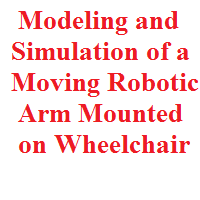Android Projects on Nearest Shopping Location Identification Systems
ABSTRACT:
Given an arrangement of focuses P and a question set Q, a gathering encasing inquiry (GEQ) brings the point p_ 2 P to such an extent that the most extreme separation of p_ to all focuses in Q is limited. This issue is proportional to the Min-Max case (limiting the most extreme separation) of total closest neighbor inquiries for spatial databases. This work initially plans another correct arrangement by investigating new geometric bits of knowledge, for example, the base encasing ball, the arched structure and the farthest Voronoi graph of the question gathering. To additionally diminish the question cost, particularly when the dimensionality builds, we swing to estimate calculations. Our primary estimation calculation has a most pessimistic scenario p2-guess proportion on the off chance that one can locate the correct closest neighbor of a point. By and by, its guess proportion never surpasses 1.05 for an expansive number of informational collections up to six measurements. We additionally examine how to extend it to higher measurements (up to 74 in our test) and demonstrate that regardless it keeps up a decent guess quality (still near 1) and low question cost. In settled measurements, we stretch out the p2-guess calculation to get a (1 + ǫ)- inexact answer for the GEQ issue. Both estimate calculations have O (log N +M) question cost in any settled measurement, where N and M are the sizes of the informational collection P and inquiry gather Q. Broad analyses on both manufactured and genuine informational indexes, up to 10 million focuses and 74 measurements, affirm the proficiency, viability, and versatility of the proposed calculations, particularly their huge change over the best in class technique.
Existing System:
While being sufficiently general to cover diverse total administrators, its consensus likewise implies that essential open doors could be ignored to streamline inquiry calculations for particular administrators. For example, the best in class is restricted by heuristics that may yield high question cost in specific cases, particularly for informational indexes and inquiries in higher (more than two) measurements. Roused by this perception, this work concentrates on one particular total administrator, to be specific the MAX, for the total closest neighbor inquiries in substantial databases and plans strategies that altogether decrease the inquiry cost contrasted with the MBM (Minimum Bounding Method) calculation from.
Following the past example when considering a particular total sort for total closest neighbor inquiries (e.g., amass closest neighbor questions for the SUM administrator, we assign an inquiry name, the gathering encasing question (GEQ), for a total closest neighbor question with the MAX administrator. A case of the GEQ issue is delineated.
More applications could be inclined to exhibit the handiness of this question and more illustrations are accessible from the earlier examination. Instinctively, rather than many existing variations of the closest neighbor questions that request the best answer of the normal case the GEQ issue scans for the best answer to the most pessimistic scenario. This issue turns out to be considerably more troublesome if the inquiry bunch is extensive also.
Proposed System:
This work introduces new, proficient calculations, including both correct and surmised forms, for the GEQ issue that altogether outflank the cutting edge, the MBM calculation. In particular, • We display another correct scan technique for the GEQ issue in Section 4 that instantiates a few new geometric bits of knowledge, for example, the base encasing ball, the raised structure and the uttermost Voronoi graph of the inquiry gathering, to accomplish higher pruning power than the MBM approach.
• We outline a √2-estimation (most pessimistic scenario guess proportion in any measurements) calculation in Section 5.1, in the event that one can locate the correct closest neighbor of a point and the base encasing chunk of Q. Its asymptotic inquiry cost is O (log N + M) in any settled measurements. Our thought is to decrease the GEQ issue to the established closest neighbor seek by using the focal point of the base encasing ball for Q.
• We stretch out the above plan to a (1+ǫ)- estimation calculation in any settled measurement in Section 5.2. This calculation has a solid hypothetical intrigue and it likewise accomplishes the ideal O (log N+M) question cost in any settled measurement.
• We expand a similar thought from the √2-inexact calculation to considerably higher measurements in Section 5.3, since it is difficult to locate the correct closest neighbor proficiently and the correct least encasing ball in high measurements by and by.
• We talk about the difficulties when Q turns out to be huge and circle situated in Section 6.1, and demonstrate to adjust our calculations to deal with this case effectively. We likewise exhibit an intriguing variety of the GEQ issue, the obliged GEQ.
• We exhibit the productivity, adequacy, and versatility of our calculations with broad trials. These outcomes demonstrate that both are correct and surmised strategies have essentially outflanked the MBM strategy up to 6 measurements. Past 6 measurements and up to high measurements (d = 74), our estimated calculation is as yet proficient and compelling, with a normal guess proportion that is near 1 and low IO cost.
Execution Modules:
1. Aggregate Nearest Neighbor
2. Approximate Nearest Neighbor
3. Min Max Nearest Neighbor
4. Nearest Neighbor
Total Nearest Neighbor:
The best in class strategy for the GEQ issue is the Minimum Bounding Method (MBM) from. The vital procedure embraced by the MBM is the triangle imbalance. It is a heuristic strategy that has O (N + M) question cost. Practically speaking, its question cost has just been contemplated in the two-dimensional space. Our analyses over an expansive number of informational collections in Section 7 recommends that the MBM calculation may prompt high question cost for extensive informational collections and all the more essential, its execution debases altogether with the expansion of the dimensionality.
Surmised Nearest Neighbor:
Truth be told, it is anything but difficult to see that any correct scan strategy for the GEQ issue will unavoidably experience the ill effects of the scourge of the dimensionality since the traditional closest neighbor seek is a unique case of the GEQ issue (when Q has just a single point). Thus, for informational indexes in high measurements, like the inspiration of doing surmised closest neighbor look as opposed to recovering the correct closest neighbor in high measurements (where every correct strategy corrupt to the costly straight sweep of the whole informational index), finding productive and successful Approximation calculations are the best option.
Min Max closest Neighbor:
R-tree and its variations have been the most broadly sent ordering structure for the spatial database, or information in multi-measurements all in all. Instinctively, R-tree is an augmentation of the B-tree to higher measurements. Focuses are assembled into least jumping rectangles (MBRs) which are recursively gathered into MBRs in more elevated amounts of the tree. The gathering depends on information territory and limited by the page estimate. A case of the R-tree is delineated in Figure 2. Two vital inquiry sorts that we use on R-tree are the closest neighbor (NN) questions and range inquiries.
NN look has been widely examined, and many related works in that. Specifically, R-tree exhibits proficient calculations utilizing either the profundity first or the best-first approach. The primary thought behind these calculations is to use the branch and bound pruning procedures in view of the relative separation between an inquiry direct q toward a given MBR N (e.g., minimalist, minDist).
Closest Neighbor:
Tragically, the most pessimistic scenario inquiry costs are not logarithmic when R-tree is utilized for NN or range seek (notwithstanding for inexact forms of these inquiries). To configuration hypothetically stable calculations with logarithmic expenses for our concern, we require a space segment tree with the accompanying properties : (1) The tree has O(N) hubs, O(log N) profundity and every hub of the tree is related to no less than one information point. (2) The cells have limited angle proportion. (3) The separation of a point to a cell of the tree can be figured in O (1). Aria et.al outlined an alteration of the standard tree called the Balanced Box Decomposition (BBD) tree which fulfills every one of these Properties and consequently can reply (1 + ǫ)- rough closest neighbor questions in O((1/ǫd) log N) and (1 + ǫ)- inexact range look inquiries in O((1/ǫd) + log N). BBD-tree takes O (N log N) time to construct. We utilize BBD trees in the plan of the ideal (1 + ǫ)- guess calculation with the logarithmic inquiry many-sided quality for Solving the GEQ issue. For closest neighbor seeks in high measurements, every single correct strategy will, in the long run, corrupt to the costly straight sweep of the whole informational collection and one needs to embrace productive and compelling estimated calculations.
The BBD-tree likewise ends up noticeably unreasonable for vast informational indexes in high measurements. For this situation, we could utilize the distance file for correct closest neighbor recovery (in still generally low measurements), or Medrano and LSH-based strategies (territory delicate hashing) (e.g., the most recent improvement spoke to by the LSB-tree) for the dough forms in high measurements. Since our thought in planning the surmised calculations for taking care of the GEQ issue is to lessen it to the essential closest neighbor seek issue, our approach could use on every one of these methods for the closest neighbor hunt and advantage by any headway in this point. This is an exceptionally engaging element of our guess calculation and makes it to a great degree adaptable and straightforward for adjustment.
HARDWARE REQUIREMENTS:
System: Pentium IV 2.4 GHz.
Hard Disk: 40 GB.
Floppy Drive: 1.44 Mb.
Monitor: 15 VGA Color.
Mouse: Logitech.
Ram: 512 Mb.
SOFTWARE REQUIREMENTS:
Operating framework: Windows XP.
Coding Language: Java 1.6
Tool Kit: Android 2.2
IDE: Eclipse
Download Project: Nearest Shopping Location Identification Systems

